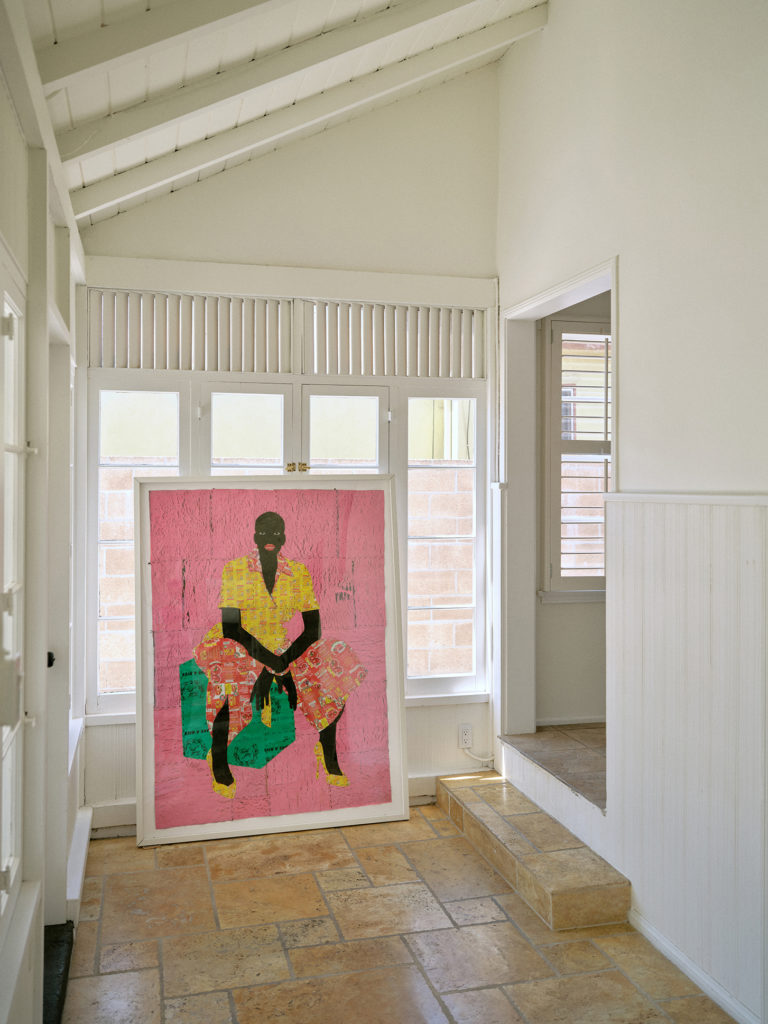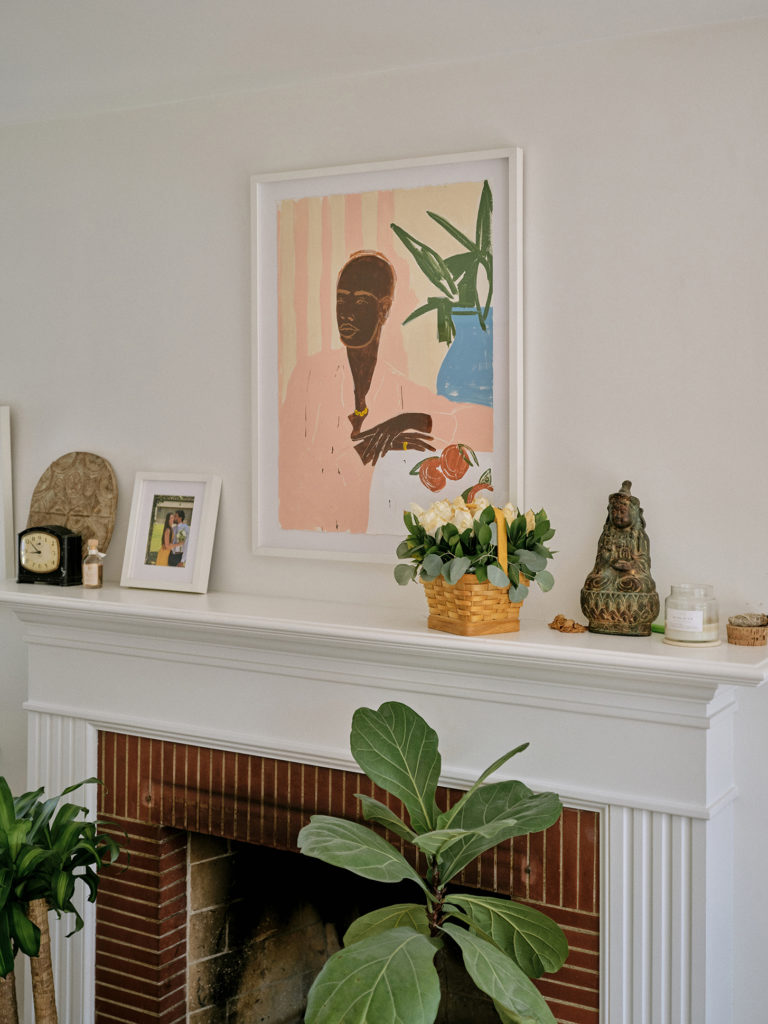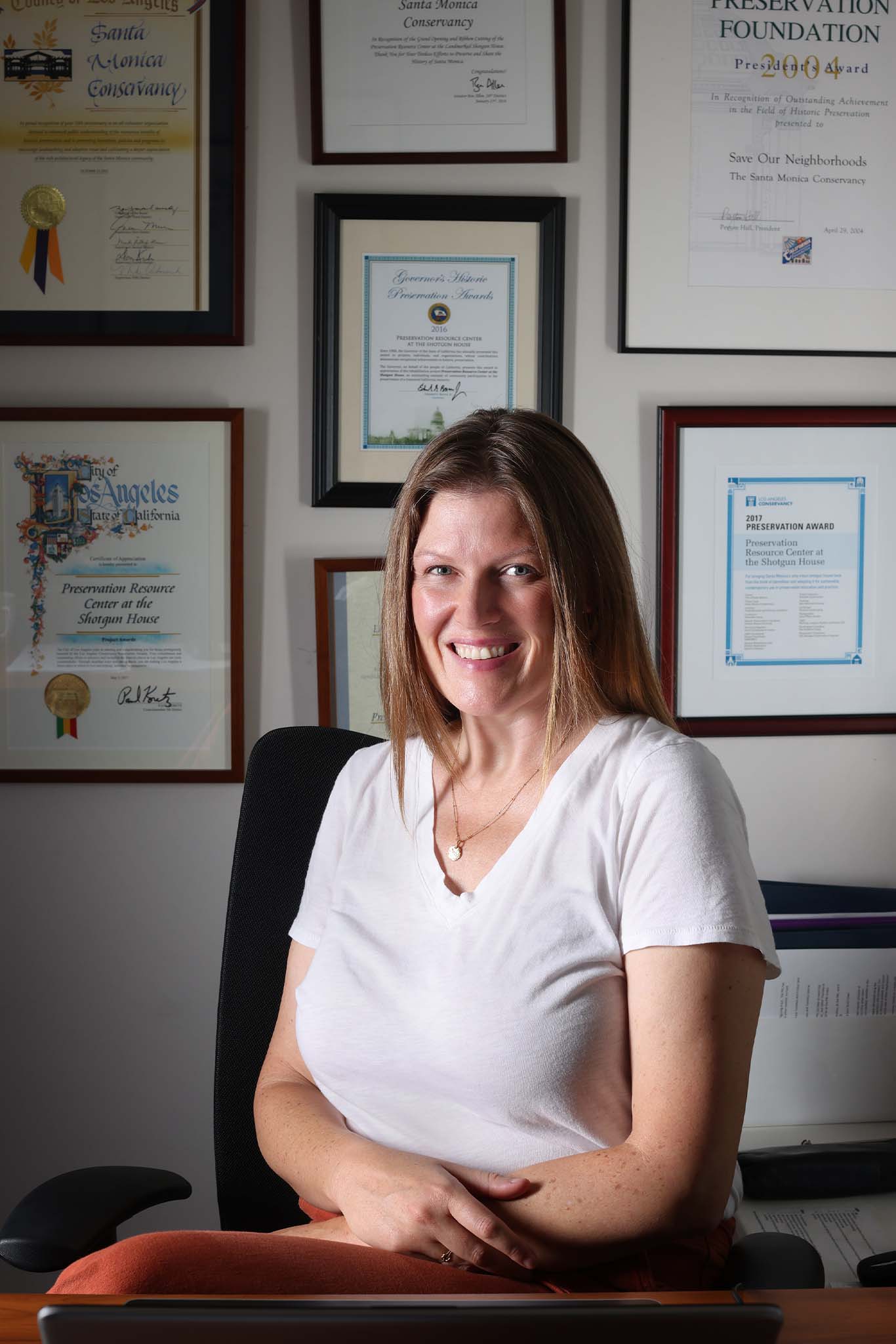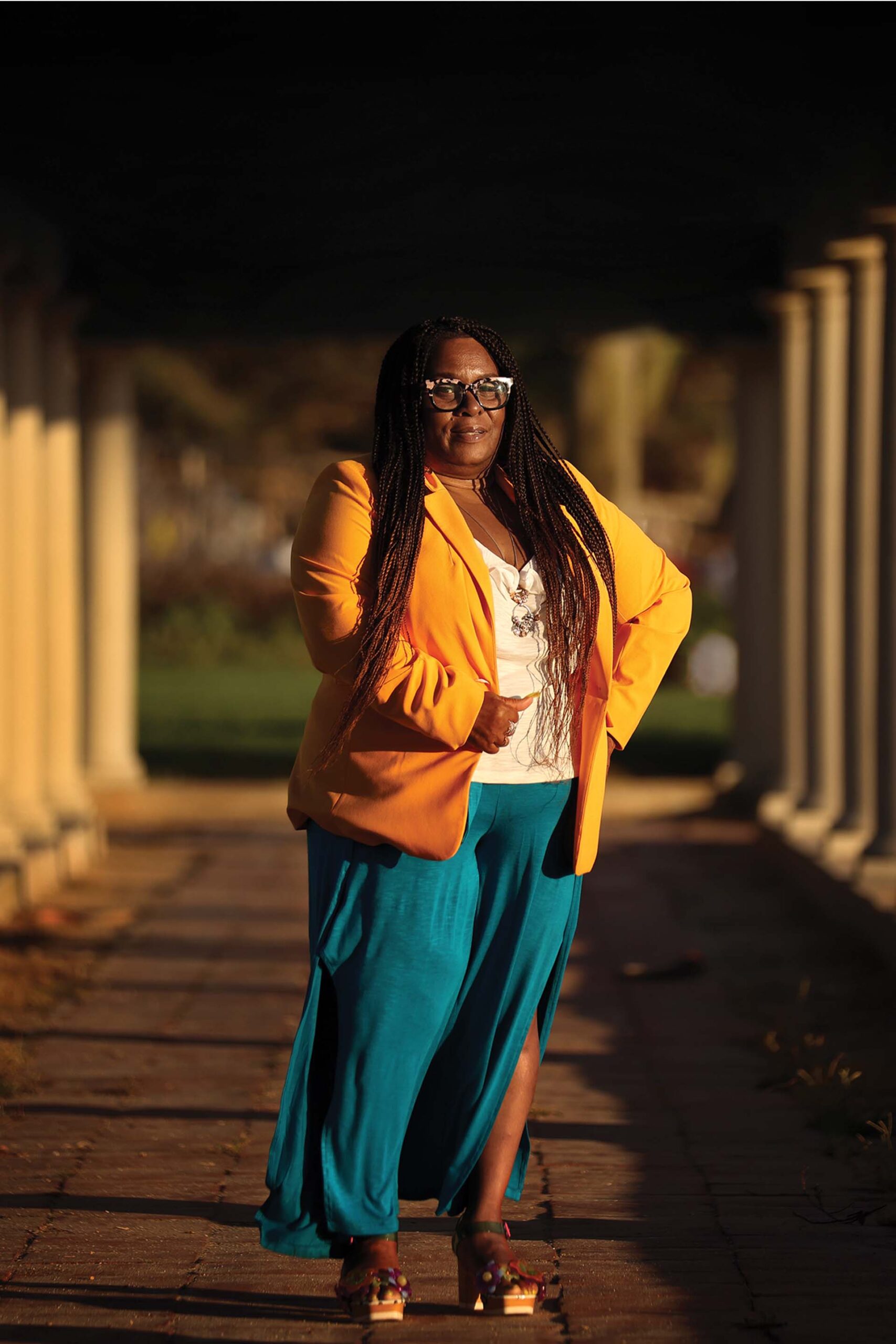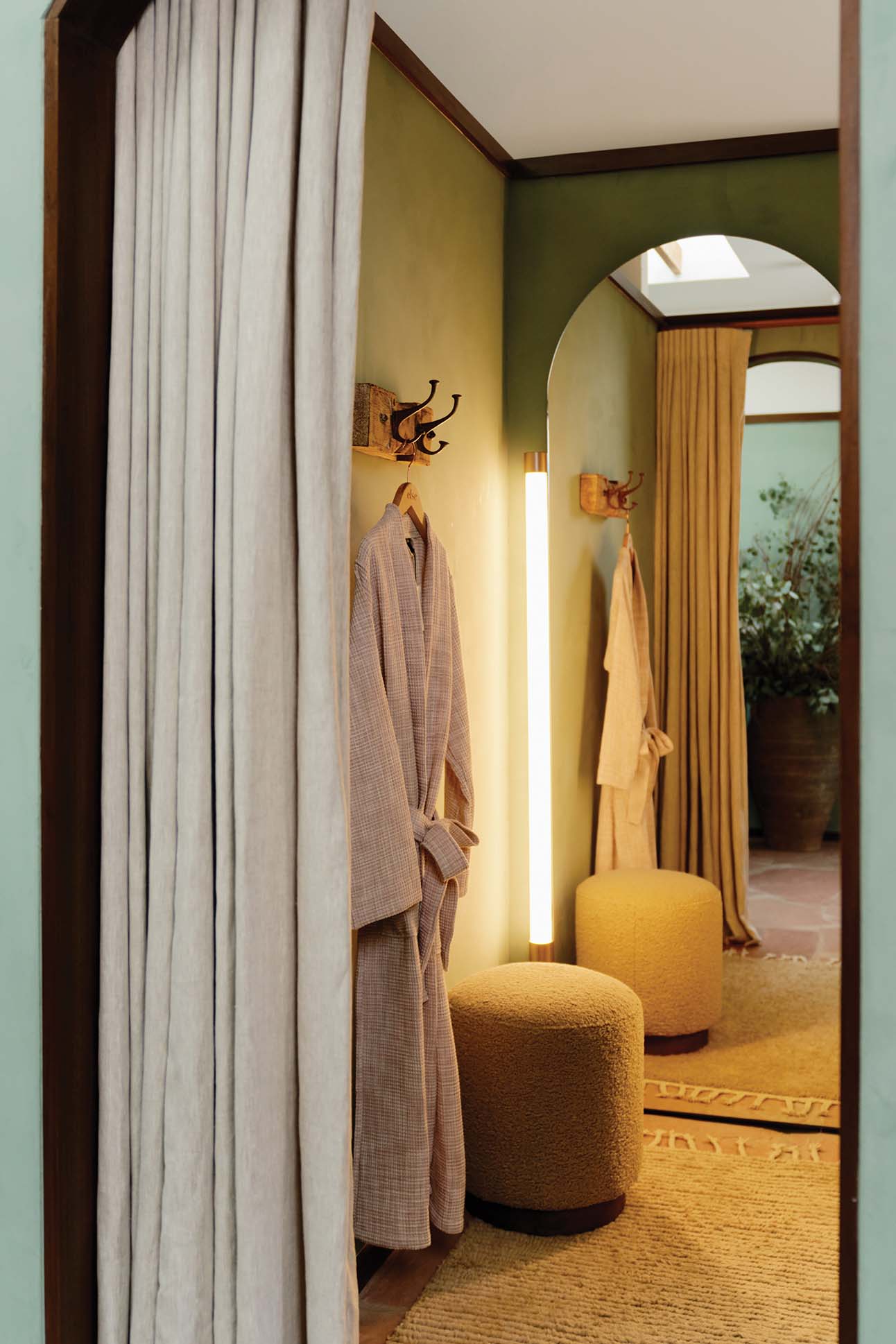Text by Evan Nicole Brown
Images by Cody James
In 2009, Tina Tangalakis was working in the fashion industry in Hohoe, Ghana when she decided to team up with local entrepreneurs and seamstresses to create Della, a fashion line designed to provide jobs and training to members of the community. “During that time, I was very much entrenched in the culture, and not just the culture, but also the arts that are coming from there,” she said from her Los Angeles home in Leimert Park, where paintings including “The Potter” by Barry Yusufu hang on the walls. “And I saw how there was a very rich, deeply underrepresented artistic movement, not just in Ghana, but other countries and within other communities as well.”
Though fashion was Tangalakis’s initial medium for interfacing with African designers and artists, she realized that art consulting would require similar skills to those she developed working in fashion—marketing, building client relationships, an artistic sensibility. “It was pretty seamless. Going from fashion in Ghana to art in Ghana, it really tied together my passions, and I think an ethos that I believed in,” she said.

They’re reaching out and seeking Black artists, LGBTQIA+ artists, artists that usually wouldn’t be on walls in certain museums or in certain galleries.
Chris Lakey
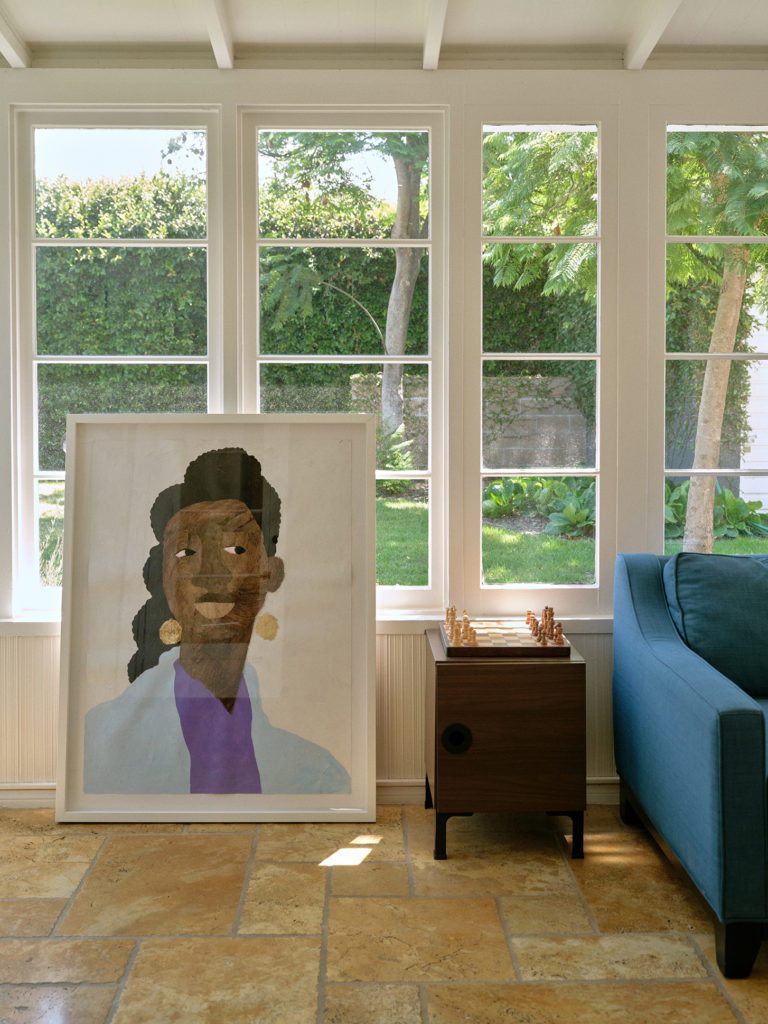
Chris Lakey, Tangalakis’s husband, follows the careers of artists for a living, as well as a senior vice president of creative synch at Kobalt Music Group. For a decade, Lakey and Tangalakis developed their overlapping interests by building their personal art collection. When Tangalakis decided she wanted to take it further, the two merged their talents to create So Much Art, an art consulting business with a focus on Black artists, women artists, and artists from communities underrepresented in the mainstream art world.
Tangalakis and Lakey, however, have distinctly different tastes. Tangalakis gravitates to figurative art and Lakey to street art, which overlaps with his love of ’90s hip-hop music, its sonic parallel. “I call it ‘art living in the wild,’” Lakey said. “I like that the city can be the canvas for artists, you know, whether it’s legal murals or graffiti culture.”
Their aesthetic divergences allow the couple to understand the specific tastes of clients spread from New York to London. “We want to cater to their needs, but they also rely on us to expand their purview into the art world,” Lakey said. “So they may have a certain style of art that they’re just very used to collecting. But we love when we get to introduce them to new artists or new regions.”
The artists Lakey and Tangalakis have worked with include Chiderah Bosah, a Nigerian painter whose colorful, monochromatic canvases serve as the perfect backdrop for his striking Black figures, and Uzo Njoku, a New York-based artist who works across mediums using oil paint, acrylic, and elements of collage. The talent and diversity of styles the couple represent through So Much Art demonstrates their taste and their passion for discovering and following artists. “We stand behind things that we love, aesthetics that we love, and artists that we love,” Tangalakis said. “I focused a lot on building an aesthetic and a brand that I felt like both artists and collectors would trust.”
In 2020, police shootings set against the backdrop of a deadly pandemic affected the way some collectors approached buying art, aligning them with the priorities of So Much Art. “A lot of art collectors are looking at their walls, and maybe they had quote-unquote ‘traditional fine art,’” Lakey said. “And they’re reaching out and seeking Black artists, LGBTQIA+ artists, artists that usually wouldn’t be on walls in certain museums or in certain galleries.”
The couple’s collecting and expansion into consulting has bestowed Tangalakis and Lakey with a community of artists, clients, and design contacts. “Since we’re not tied to just one gallery, there’s not just one artist that we represent, which allows us the freedom of really building relationships with all types of artists,” Tangalakis said. “As long as we like their work and see their passion and their passion aligns with ours, they’re artists that we can stand behind, which is exciting.”







